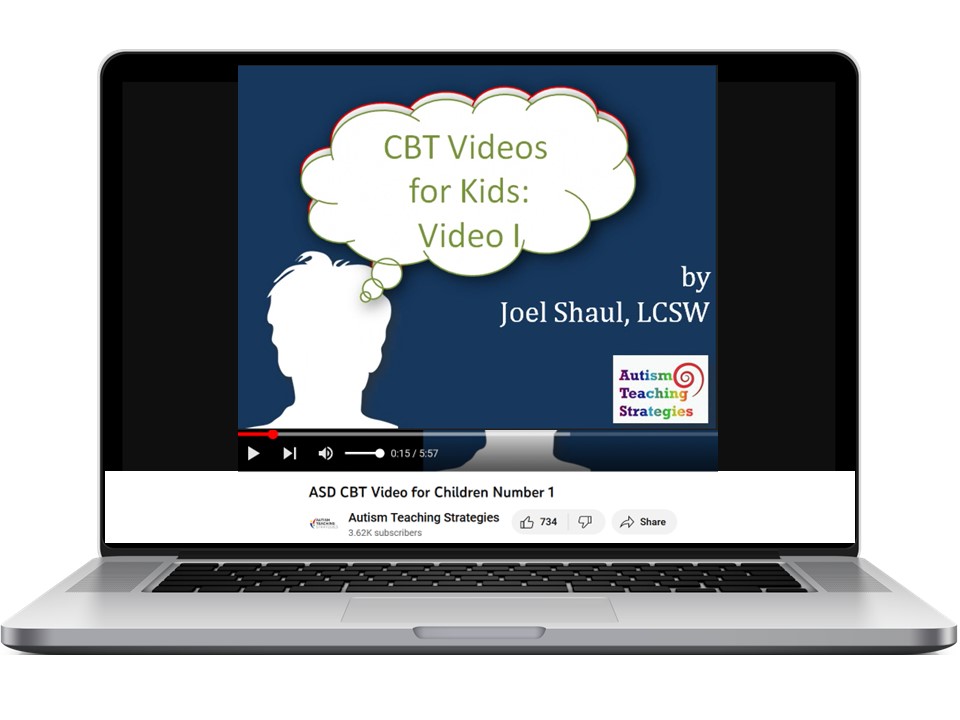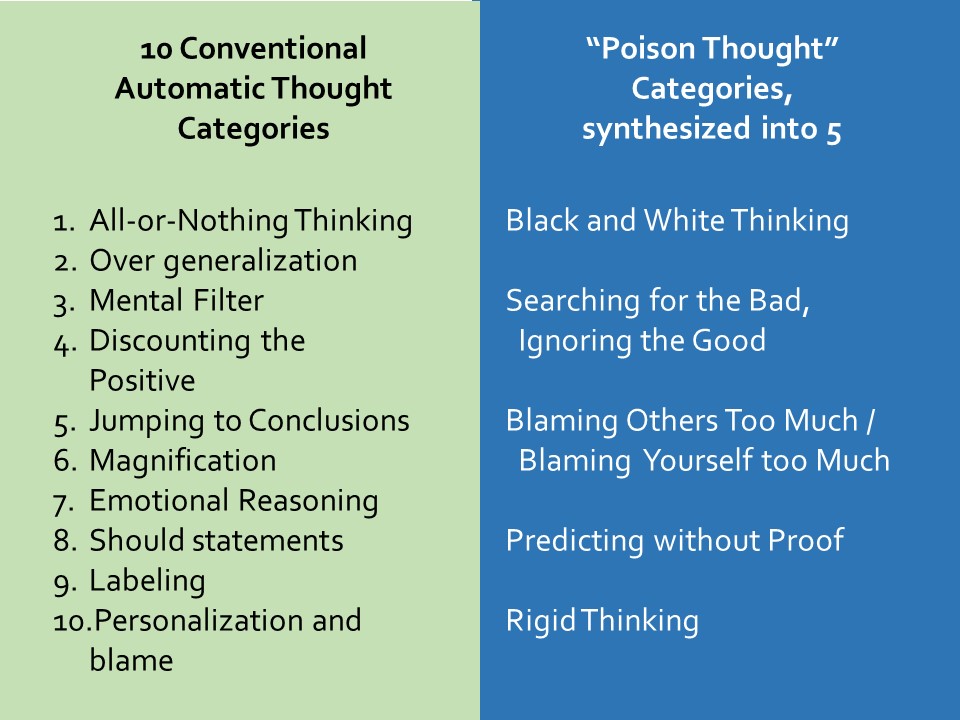(click HERE to link to the CBT Videos for Kids)
About CBT YouTube videos and how to use them
Many years ago, I had noticed that many children and teens appeared disengaged and discouraged in cognitive behavioral therapy.
First, lots of children and teens found the conventional CBT terminology too complex and the automatic thought categories too numerous. Second, the heavy and exclusive focus on the child’s problem thinking seemed too intense for many children, causing them to back away from the work.
In 2014, I developed the eight CBT videos in an effort to address these sources of resistance in CBT work.
Fewer categories and simpler language
Finding the conventional 10 CBT thought distortions too numerous, wordy and overlapping for children, I crunched them down to 5 categories, using language that is less complicated. I then created icons to go with each category. I found that most children could grasp the basics of these five modified categories of automatic negative thoughts, so I made them the foundation of the CBT videos.
Initial focus on hypothetical examples
In the videos, I placed less initial emphasis on the problem thinking of the child viewing the video, and instead directed attention to hypothetical problems of other children. I found that by beginning the work in this manner, children subsequently were more confident and successful in assessing their own self-defeating thoughts and actions.
The videos were designed for children with ASD, but you can use them with neurotypical kids.
I created these videos originally for use with children on the higher end of the autism spectrum. You will notice that quite a few of the hypothetical scenarios deal with challenging situations typically encountered by autistic children. However, quite a lot of the videos’ content concerns problems that neurotypical children would also encounter, and in fact I have gotten feedback from many clinicians who use the videos with neurotypical kids and just skip over the parts that appear tailored for autism.
How to use the videos
The videos are designed to be viewed with an adult, with very frequent pauses for discussion. Although the first three videos are important to view in full, it is not always necessary to watch every subsequent video or every part of any video that you start. You can skip around, placing more emphasis on the videos that address the most relevant concerns.
Video Number One is shorter and simpler than the remaining seven. It introduces Poison Thoughts (automatic negative thoughts) and Antidote Thoughts.
Video Number Two takes the viewer into the minds of various children experiencing Poison Thoughts, and demonstrates how these can be countered with Antidote Thoughts.
Video Number Three (see screen shot above) introduces the 5 Poison Thought categories, showing examples of each in the minds of various children.
Videos Four through Eight go over each of the 5 Poison thought categories in turn, using many examples of how various children are affected by the thoughts. In each example, after first identifying and “fixing” the problem shown in the example, the viewer is asked whether they themselves are affected by such thoughts. Again, pausing frequently for discussion, especially when a child is talking about their own “Poison Thoughts,” is important.



Joel Shaul, LCSW
Here are links to the other parts of this series, Refinements to help make CBT more suitable for kids.
Intro: Refinements to Make CBT Better Suited for Kids [link]
Part 2: CBT Token Systems – CBT Cards, a Free Download [link]
Part 3: More CBT Token Systems – Using Mr. Yuk Stickers [link]
Part 4: Creating Thought “Enemies” and “Heroes” in Child CBT [link]
Part 5: Tailoring CBT Methods & Media to the Individual [link]






